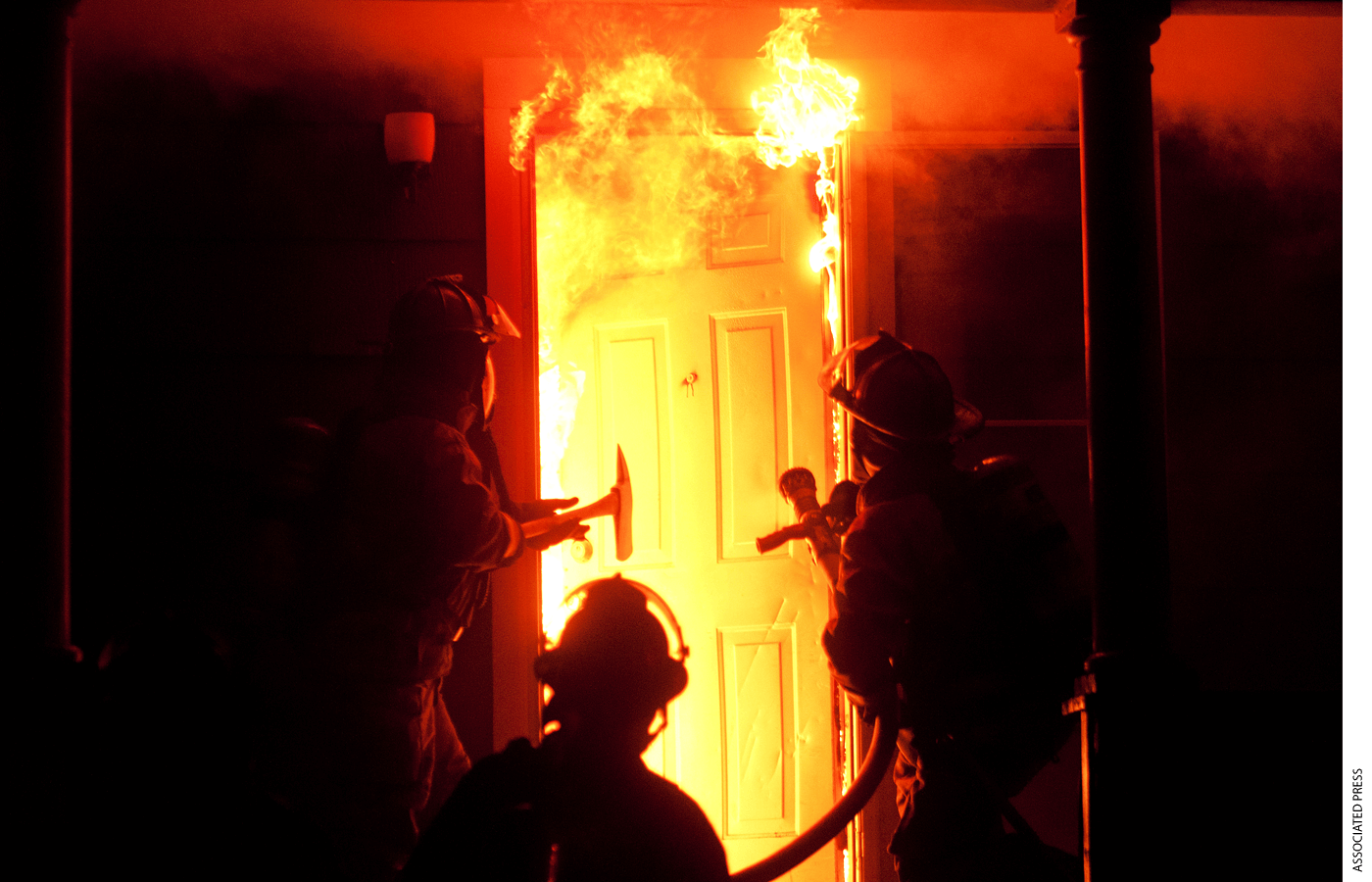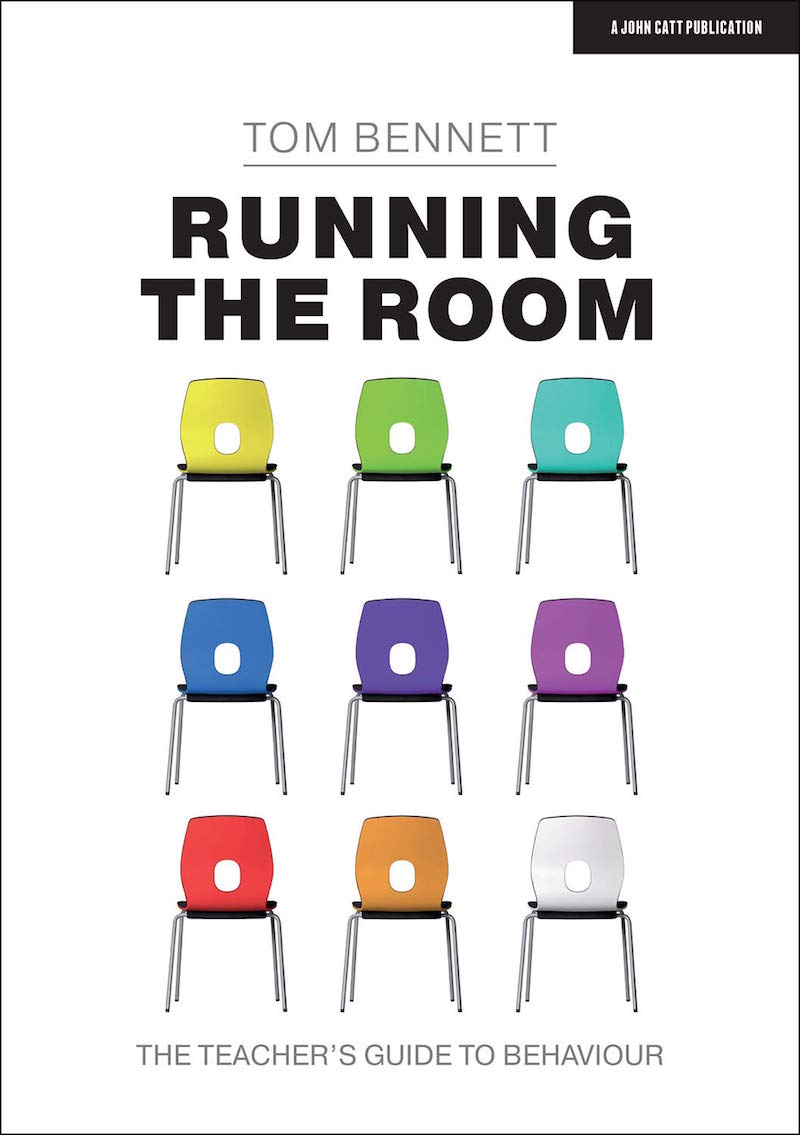Teachers Need to Be Taught To Teach Students to Behave
/* custom css */
.tdi_2_89c{
min-height: 0;
}
/* custom css */
.tdi_4_199{
vertical-align: baseline;
}

/* custom css */
.tdi_6_91c{
min-height: 0;
}
/* custom css */
.tdi_8_391{
vertical-align: baseline;
}
After years of watching and teaching lessons, and then teaching people to teach lessons, and then watching that, I can observe that many teachers make the same mistake. It is incredibly common, and at times it almost appears to be the default. The most common mistake teachers make is this:
They wait for misbehavior to occur and then they react to it.
Why? Usually they often haven’t had much training in how to handle behavior. Teacher preparation in this area is often very light touch (or worse, sometimes impractical), so new teachers can be forgiven for thinking that it isn’t important. Who could blame them? If you haven’t been shown how to do something, why would you know? Behavior management is complex. No one is born good at it. It needs to be taught to you if you don’t want to have to figure it out for yourself. And if it isn’t taught, you end up with a teacher who has no idea how to direct the behavior of a group of children, and is therefore forced to wing it, go by gut instinct, or make it up as they go along.
Which is where we find ourselves now.
Hoping it doesn’t rain
This results in a strategy I refer to as ‘hoping it doesn’t rain’. It goes like this:
Day 1 of the new term. The new classroom teacher enters. Students are allowed to take any seat they want, and despite a few token directions and reprimands they ignore the teacher, who gives up and simply begins the lesson.
Perhaps a PowerPoint slide is shown, with an attempt to explain it. Perhaps books are given out in this noisy period of détente, where little is asked of the student, and little is done except by the few. Perhaps there is a spell of silence and the teacher sees her chance to begin. Quickly, one, two, three students start talking over the instruction, or ignore it completely, and tend to their make-up or phones. The teacher then stops the lesson to deal with this. In another part of the room, some other students realize an
opportunity has appeared to swap Magic: The Gathering cards. Someone else comments on the first group. Bored students, having lost their focus, find other things to do. The noise level rises again. We are back to square one, but square one is all there is. Driven to despair, the teacher raises her voice a few times, and warns or issues sanctions. The class sneers or ignores her. Repeat, until the merciful bell.
The ‘strategy’ is to try to teach, and deal with misbehavior when it occurs. She has walked into a world with dark skies, wearing only a light jacket, and hoped it doesn’t rain.
This seems like a reasonable strategy to some extent. If you are a professional who knows a good deal about history or arithmetic but little about running a room (or worse, you don’t know that it’s a skill set at all), then it’s perfectly reasonable to do the thing you are good at, and crucially the thing you believe you are being paid for.
But it is the wrong strategy.
The fire brigade model
Imagine you were the steward of a new high rise, and you wanted to make sure it didn’t burn down. But the framework is made of wood, and every apartment runs on a gasoline generator. One strategy would be to make sure there was a team of fire engines outside the building, heavy with hydrants and hoses, ready to spring into action the minute flames caught. You could do that. But even in the best-case scenario, the building will have already caught fire before your strategy kicks in. You are doomed to always put fires out.
But that’s exactly what the teacher in the scenario above is doing. In fact, it’s not even that useful, because I’ve assumed the fire brigade in this story are well trained and equipped to handle fires. Going back to the classroom, most teachers aren’t particularly well trained in “putting out fires” (in this case, dealing with misbehavior once it’s started etc.). Often, teachers have to make it up as they go along. They have no option if no one has shown them any better.
The fire prevention model
 It is obvious what the wise steward/architect could have done: design buildings that don’t catch fire often or easily: build them out of concrete and iron; partition each floor into inert silos that defy the transmission of heat; demand that all materials used are non-flammable; stipulate a maximum occupancy;
It is obvious what the wise steward/architect could have done: design buildings that don’t catch fire often or easily: build them out of concrete and iron; partition each floor into inert silos that defy the transmission of heat; demand that all materials used are non-flammable; stipulate a maximum occupancy;
and so on. In short, you reduce fires by making sure they are far less likely to happen and by working out what to do when they occur.
What you don’t do is hope fires don’t happen, and only think about how to respond when your smoke alarm is shrieking murder at you. The kind of caution that drives health and safety regulations is amongst the dullest but most necessary of human instincts, and as sure an indicator of social and civil flourishing as the invention of language.
It’s equally crazy to walk into a classroom without planning for the most common problems that occur. But we do it. It reminds me of a complaint I sometimes hear from people who object to managing behavior at all. “I’m paid to teach,” they say, “not to manage their behavior.” Brother, are you in the wrong job.
Teaching is not just standing in front of a room and talking at people. That’s a poetry recital; that’s a YouTube lecture; a eulogy. Teaching is much more than that. It is a relational activity. It is dialogic. It involves directing the behavior of a group of people to behave civilly with one another and with you. It involves directing not just their academic habits but also their social habits. In short, the teacher, if she wants to teach, has to understand not only her subject with detail and fluidity of recall but also how to run the room.
Why aren’t teachers fully prepared to manage behavior?
My first classes brayed and shouted at me and asked when the real teacher was turning up. It was awful, truly awful. A few schools later and it was still pretty bad. I used to go home every night, frustrated to the point of tears, and wonder, “Why can’t I do this?” What I should have been asking was, “Why has no one shown me how to do this?”
Why indeed? Why would a pilot blame herself if she couldn’t land a 747 first time? What physician would reprimand a colleague for his ignorance of open-
heart surgery if he was a librarian? And why should a training teacher be good at something as complex as managing the behavior of dozens of recalcitrant children without some kind of structured training in the topic?
We had, and have, a very big problem with behavior instruction for teachers in the UK. And from what I’ve seen of the world, many similar countries have a similar problem. High-quality, practical and structured early-career training on how to run a room full of children is very hard to find. There are some providers who deliver good programs. But at present many teachers lack a basic training in classroom management.
It is still too often assumed that teachers will learn this part of the job on the job; that it forms part of the craft of the classroom, unpacked as you progress. But in no other profession would we applaud ourselves for so recklessly abandoning the crucial phases of career instruction to the vagaries of fate, where you are fortunate if you encounter a wise mentor who is not only good at behavior management but also adept at training it. And those are two separate things.
The lost art of behavior
Running the room risks becoming a lost art in many schools. But the good news is that there is a body of knowledge teachers can learn, and strategies teachers can learn how to apply. There are things that tend to work well with some children, and strategies that work better with others. There are learnable micro-behaviors that are easy to practice once demonstrated, but hard to discover by oneself. To quote Dylan Wiliam, “Everything works somewhere, and nothing works everywhere.” Discerning the when and the where of effective strategies is every teacher’s task. When managing behavior, we can say with reasonable confidence that some things tend to work more reliably than some other strategies, and some things work rarely, if ever.
In short, we do not train teachers half as well as they should be trained in one of the most important skills of their jobs, and that, to my mind, is some kind of tragedy. When I think of the countless hours and careers and futures sacrificed on this altar of ignorance and stubbornness, it drives me into despair.
Why is current thinking so wrong?
Sadly, many mistaken approaches are explicitly taught to teachers at the beginning of their careers. For example, I was told that children will behave well if you let them follow their interests, if you make the lessons engaging enough, and if you permit them to express themselves. There is a commonly held view that children naturally want to learn, are innately inclined to learn, and it is the unnatural classroom model that creates friction, conflict and misbehavior as much as anything else. In this view, schools and teachers themselves are responsible for most bad behavior.
That is nonsense. It is absurd to suggest that children would behave well if only we got out of their way and let their angelic natures self-direct towards the love of knowledge and wisdom and goodness. Children are lovely indeed, but they can be lazy, and kind, and hypocritical, and selfish, and angry, and forgiving, and every other sin and virtue. Which is to say, they are just like us.
Some common behavior myths:
- Some people have ‘got it’ – the magic touch with It’s true that some have better interpersonal skills than others, but subscribing too much to this leads us to the sin of essentialism – that teaching is an innate gift rather than something that can be learned.
- If they misbehave, it’s your fault. Sometimes we can antagonize children, or handle them the wrong way, but if they tell you to get stuffed, it is rarely because your starter activity wasn’t engaging
- Teacher authority is oppressive, because everyone is equally important. Everyone is important, it’s This aphorism is usually mangled, though, to mean “It’s wrong to tell children what to do.” But the teacher needs to be the authority in the room, for very good reasons we’ll explore throughout this book.
- Kids need love, not boundaries. They need both. Boundaries without love is tyranny, but love without boundaries is
- They need to like It’s great if they like you, but we’re not here to be liked. We’re here to teach them, and if we make their liking us the aim instead, we will sacrifice their learning for our relationships. The best part is that if you teach them well, they probably will like you.
We’re not designed to behave naturally

Classrooms are unnatural to some extent, of course, given that they are unique to our species. They are also highly evolved, efficient methods of imparting a lot of knowledge to a lot of people at once. We’re not, as yet, in a place where we can afford to privately tutor every child; and until that point, learning will have to be a communal activity. It remains “groups of people sitting together,” learning how to cooperate in ways that would dazzle a less collaborative species or ancestor. In the now-ancient film Crocodile Dundee, the titular protagonist, a grizzled Australian bushman from the Outback, comes to America, and the film’s high concept rests on his ‘fish out of water’ character arc. Upon arriving in New York, he looks out of his limousine onto the teeming masses of Fifth Avenue streaming along the pavements, so unlike the lonely desolation of the baking Outback. “New York City, Mr Dundee,” says Mark Blum. “Home to 7 million people.” “That’s incredible,” he replies. “Imagine 7 million people all wanting to live together. Yep, New York must be the friendliest place on earth.”
It wasn’t the world’s funniest joke even then, but the humor rested on the then well-understood premise that New York was a violent and often dangerous city. At the time, it was famous for its muggings and inner-city unrest. The “gag” was that New Yorkers were legendarily brittle and cynical.
It’s not all about relationships
But in a sense, he was absolutely right. Even just to co-exist in such close quarters, in circumstances of such density, is a massive achievement for any social group. Think of the intense, constant background buzz of accepted norms and tolerance levels, and mutually agreed contracts of forbearance and self-regulation that prevents these people from all selfishly demanding their own needs be placed first. Those who claim that good behavior is “all about relationships” need to deal with this problem: how can people behave well in communities where they have no relationship with the majority of their fellow citizens? The answer is, of course, law.
People in large communities do not abide with one another peacefully only because they have a relationship with one another, or with those who enforce
those laws, e.g. police officers and judges. That helps, but most people obey most laws because they prefer to live in a lawful community and because they do not wish to be arrested. Imagine, if you will, what would happen if all laws were suspended, and people could do as they pleased. How long do you think the civility would endure? An hour?
We can find this demonstrated neatly. In 1969 the Montreal police went on strike in protest about pay and conditions. The next day, this was the way the television news described what happened:
Montreal is in a state of shock. A police officer is dead and 108 people have been arrested following 16 hours of chaos during which police and firefighters refused to work. At first, the strike’s impact was limited to more bank robberies than normal. But as night fell, a taxi drivers’ union seized upon the police absence to violently protest a competitor’s exclusive right to airport pickups. The result, according to this CBC Television special, was a ‘night of terror’. Shattered shop windows and a trail of broken glass are evidence of looting that erupted in the downtown core. With no one to stop them, students and separatists joined the rampage. Shop owners, some of them armed, struggled to fend off looters. Restaurants and hotels were also targeted. A corporal with the Quebec provincial police was shot and killed at the garage of the Murray Hill limousine company as taxi drivers tried to burn it down.
For social order to break down, it doesn’t even require that everyone chooses to ignore rules and laws. It may well be that the majority of people would rub along quite happily under most circumstances. But all it takes is that some of them choose to reject the rules sometimes, where they see advantage in doing so. “If it be known that there is one thief in a city, all men have reason to shut their doors and lock their chests,” as Thomas Hobbes put it.
It is easy to become so used to safety, security and civil society that we forget that it is not our natural state. We also forget how good conduct is carefully passed on and perpetuated from one generation to another. It cannot be assumed that our children will simply spontaneously behave well.
Adult behavior affects student behavior
Children do not behave well by default, and nor do we. We, as adults, need to make sure that our conduct is of a high standard, otherwise how can we expect children to change their behavior?
Classes will not run smoothly unless we think clearly and explicitly about what behavior we need to succeed, and how to direct the minds of children towards it. The classroom project is a microcosm of the great project of society and civilization. Because they are both communities. And they both need to be run. Leaders and teachers need to make the weather.
Students need to be taught to behave
It is a matter of urgency that we focus on this; that we start to understand that students need to be taught how to behave. From that principle, another follows: teachers need to be taught how to teach students to behave well. And from that, we can conclude that we need to create a system that trains others to train others to do so. There is a lot of work to be done, and it is all vital that we set ourselves to it if we care about the well-being, education, and sanity of millions of children around the world.
Tom Bennett is author of Running the Room: The Teacher’s Guide to Behavior (John Catt, 2020), from which this article is adapted. He is a teacher-fellow of Corpus Christi College, University of Cambridge, and the founder of ResearchEd. He advises the British government on behavior policy.
The post Teachers Need to Be Taught To Teach Students to Behave appeared first on Education Next.
Source: EducationNext
Please Share:Please Follow Us:

